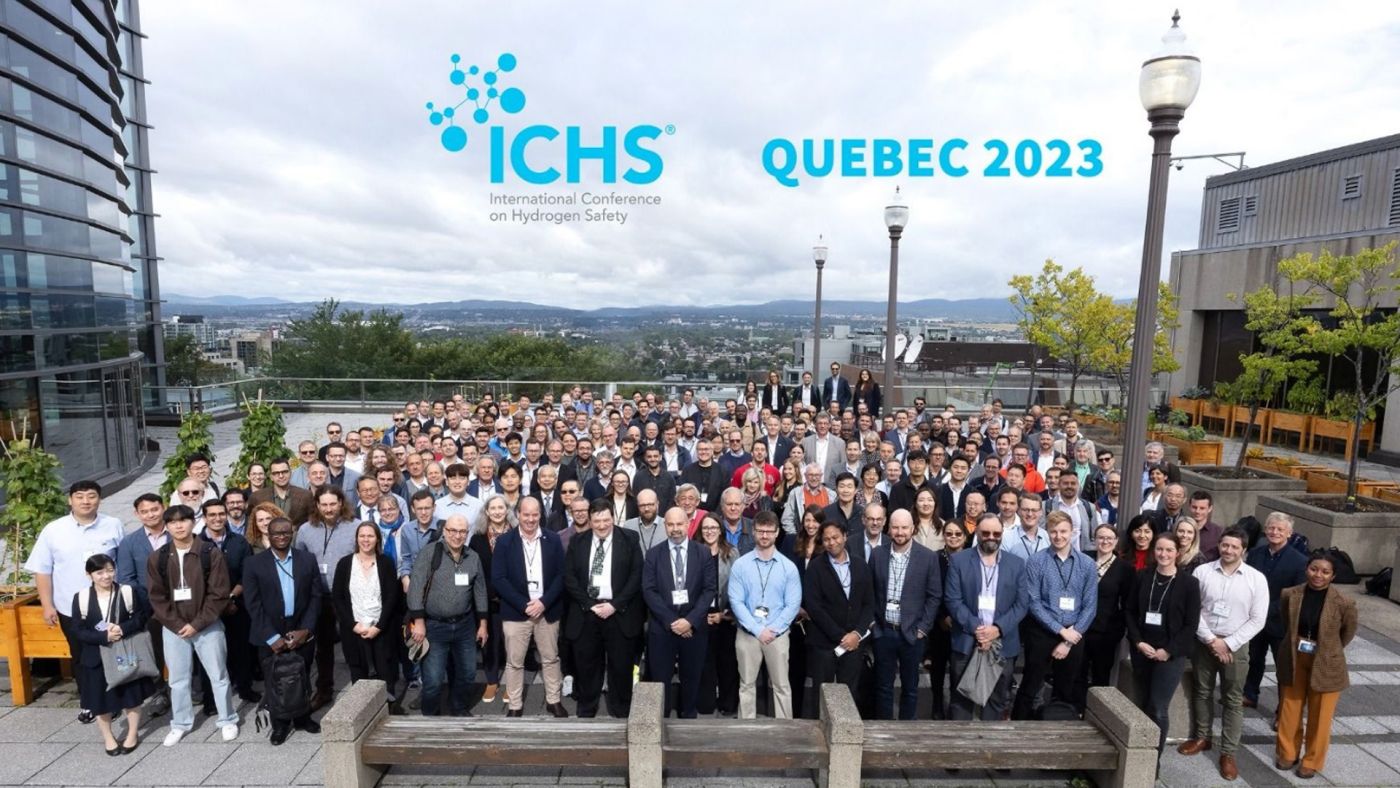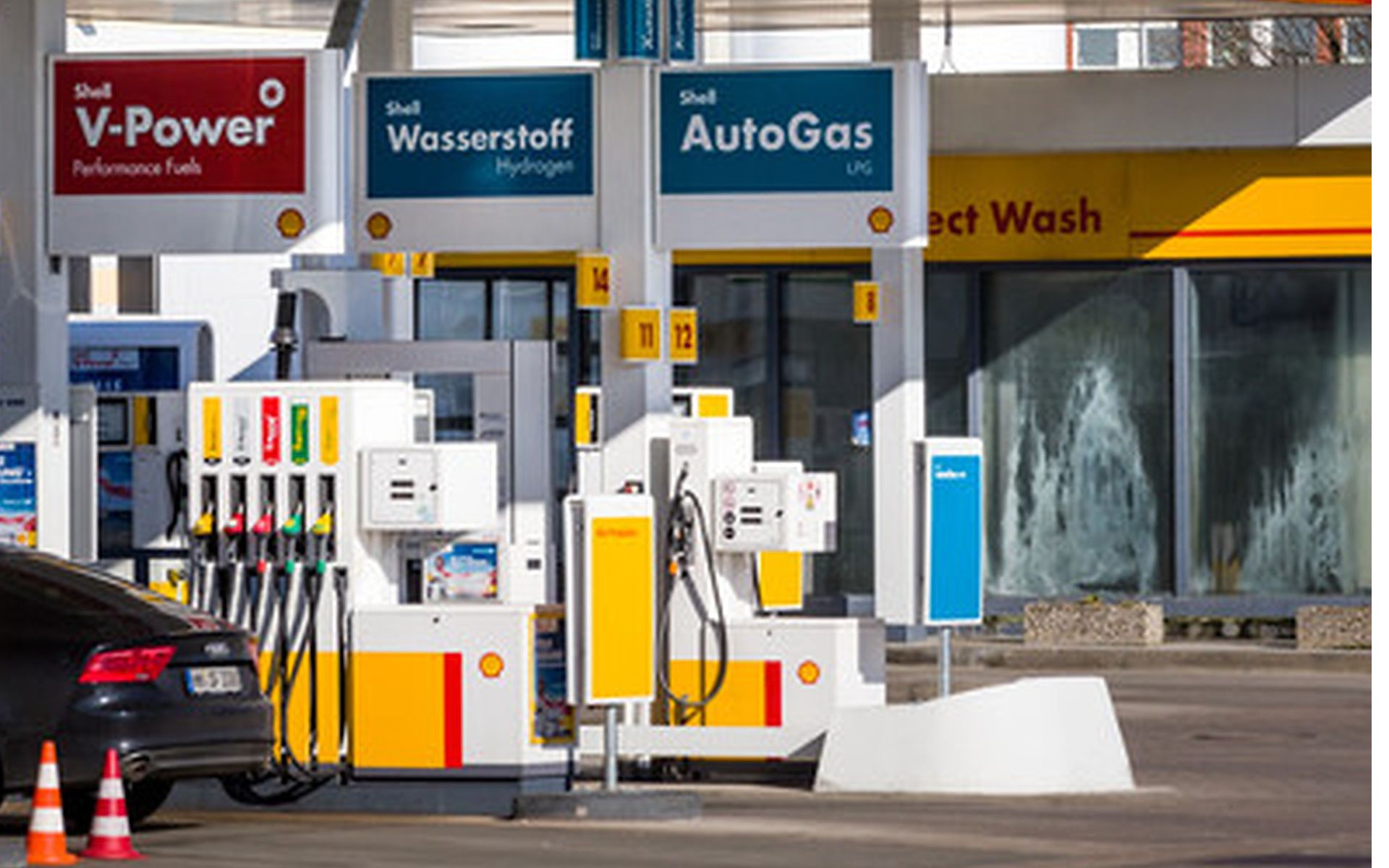Presentation at ICHS in Quebec 2023

Partners from MultHyFuel have presented papers related to the project at the tenth International Conference on Hydrogen Safety (ICHS 2023) hold at the Québec City Convention Centre, Québec, Canada from the 19th to the 21th of September, under the auspices of the International Association for Hydrogen Safety (IA HySafe).
Partners from MultHyFuel have presented papers related to the project at the tenth International Conference on Hydrogen Safety (ICHS 2023) hold at the Québec City Convention Centre, Québec, Canada from the 19th to the 21th of September, under the auspices of the International Association for Hydrogen Safety (IA HySafe). This conference attracted around 200 experts from all over the world and provided an open platform for the presentation and discussion of new findings, information and data on hydrogen safety.
The following papers related to the WP2 and WP3 of project MultHYfuel were presented:
ID128 - Zone of Negligible Extent: Example of specific detailed risk assessment for low pressure equipment in a hydrogen refuelling station
Authors (speaker) : David Torrado, Ju Lynne Saw, Matthew Ivings, Sebastien Quesnel, Elena Vyazmina, Louise O'Sullivan, Deborah Houssin, et.al.
Abstract : The MultHyFuel project aims to develop evidence-based guidelines for the safe implementation of Hydrogen Refueling Stations (HRS) in a multi-fuel context. As a part of the generation of good practice guidelines for HRS, Hazardous Area Classification (HAC) methodologies were analyzed and applied to case studies representing example configurations of HRS. It has been anticipated that Negligible Extent (NE) classifications might be applicable for sections of the HRS, for instance, a hydrogen generator. A NE zone requires that an ignition of a flammable cloud would result in negligible consequences. In addition, depending on the pressure of the system, IEC 60079-10-1:2020 establishes specific requirements in order to classify the hazardous area as being of NE. One such requirement is that a zone of NE shall not be applied for releases from flammable gas systems at pressures above 2000 kPag (20 barg) unless a specific detailed risk assessment is documented. However, there is no definition within the standard as to the requirements of the specific detailed risk assessment. In this work, an example for a specific detailed risk assessment for the NE classification is presented:
• Firstly, the requirements of cloud volume, dilution and background concentration for a zone of NE classification from IEC 60079-10-1:2020 are analyzed for hydrogen releases from equipment placed in a mechanically ventilated enclosure.
• Secondly, the consequences arising from the ignition of the localized cloud are estimated and compared to acceptable harm criteria, in order to assess if negligible consequences are obtained from the scenario.
• In addition, a specific qualitative risk assessment for the ignition of the cloud in the enclosure was considered, incorporating the estimated consequences and analyzing the available safeguards in the example system.
Recommendations for the specific detailed risk assessment are proposed for this scenario with the intention to support improved definition of the requirement in future revisions of IEC 60079-10-1.
ID263 - Identification of critical scenarios of hydrogen refuelling stations in a multifuel context
Authors (speaker): Sebastien Quesnel, Sylvaine Pique, Elena Vyazmina, Ju-Lynne Saw
Abstract : The MultHyFuel Project, funded by the Clean Hydrogen Partnership, aims to achieve the effective and safe deployment of hydrogen as a carbon-neutral fuel, by developing a common strategy for implementing Hydrogen Refueling Stations (HRS) in a multifuel context. The project hopes to contribute to the harmonisation of existing regulations, codes and standards (RCS) by generating practical, theoretical and experimental data related to HRS. This paper presents how a set of safety critical scenarios have been identified from the initial preliminary as well as detailed risk analysis of three different hydrogen refueling station configurations. To achieve this, a detailed examination of each potential hazardous phenomenon (DPh) or major accident event at or near the hydrogen dispenser was carried out. Particular attention is paid to the scenarios which could affect third parties external to the refueling station. The paper presents a methodology subdivided into the following steps:
determination of the consequence level and likelihood of each hazardous phenomenon,
the classification of major hazard scenarios for the 3 HRS configurations, specifically those arising on the dispensing forecourt;
proposal of example preventative, control and/or mitigation barriers that could potentially reduce the probability of occurrence and/ or consequences of safety critical scenarios, and hence reducing risks to a tolerable level or to as low as reasonably practicable.
ID219 - A new method to quantify the leakage scenarios (frequencies and flowrates) on hydrogen high pressure components
Authors (speaker) : Christophe Proust, Sylvaine Pique, Albin Tarisse, Didier Jamois
Abstract : One important challenge is the severity of accidents due to a leakage of hydrogen from a dispenser in the forecourt. The work presented in this paper deals with the quantification of the leakage scenarios in terms of frequencies and severities. The risk analysis exercise, although performed by experts, showed very large discrepancies between the frequencies of leakages of the same categories and even between the consequences. A large part of the disagreement comes from the failure databases chosen as shown in the paper. The mismatch between the components on which the databases have been settled and the actual hydrogen components may be responsible for this situation. However, as it stands, limited confidence can be laid on the outcome of the risk analysis. A new method is being developed to calculate the frequencies of the leakage and the flowrate based on an accurate description of each component and of each hazardous situation. For instance, the possibility for a fitting to become untight due to pressure cycling is modelled based on the contact mechanics. Human errors can also be introduced by describing the tasks. In addition of the description of the method, the application to a disperser is proposed with some comparison to experiments. One of the outcomes is that leakage cross sections can be much larger than expected.
ID252 - Detailed Assessment of Dispersion for High-Pressure H2 in Multi-fuel Environment
Authors (speakers): Elena Vyazmina, Deborah Houssin, James Stewart, Matthew Ivings, Chris Dixon, Guillaume Lecocq
Abstract: The MultHyFuel project notably aims to produce the data missing for usable risk analysis and mitigation activity for Hydrogen Refuelling Stations (HRS) in a multi-fuel context. In this framework, realistic releases of hydrogen that could occur in representative multi-fuel forecourts were studied. These releases can occur inside or outside fuel dispensers and they can interact with a complex environment notably made of parked cars and trucks. This paper is focused on the most critical scenarios that were addressed by a sub-group through the use of Computational Fluid Dynamics (CFD) modelling. Once the corresponding source terms for hydrogen releases were known, two stages are followed:
Model Validation – to evaluate the CFD models selected by the task partners and to evaluate their performance through comparison to experimental data.
Realistic Release Modelling – to perform demonstration simulations of a range of critical scenarios.
The CFD models selected for the Model Validation have been tested against measured data for a set of experiments involving hydrogen releases. Each experiment accounts for physical features that are encountered in the realistic cases. The selected experiments include an under-expanded hydrogen jet discharging into the open atmosphere with no obstacles or through an array of obstacles. Additionally, a very different set-up was studied with buoyancy-driven releases inside a naturally ventilated enclosure. The results of the Model Validation exercise show that the models produce acceptable solutions when compared to measured data and give confidence in the ability of the models, and the modellers, to capture the behaviour of the realistic releases adequately. The Realistic Release Modelling phase will provide estimation of the flammable gas cloud volume for a set of critical scenarios and will be described at the second stage.


